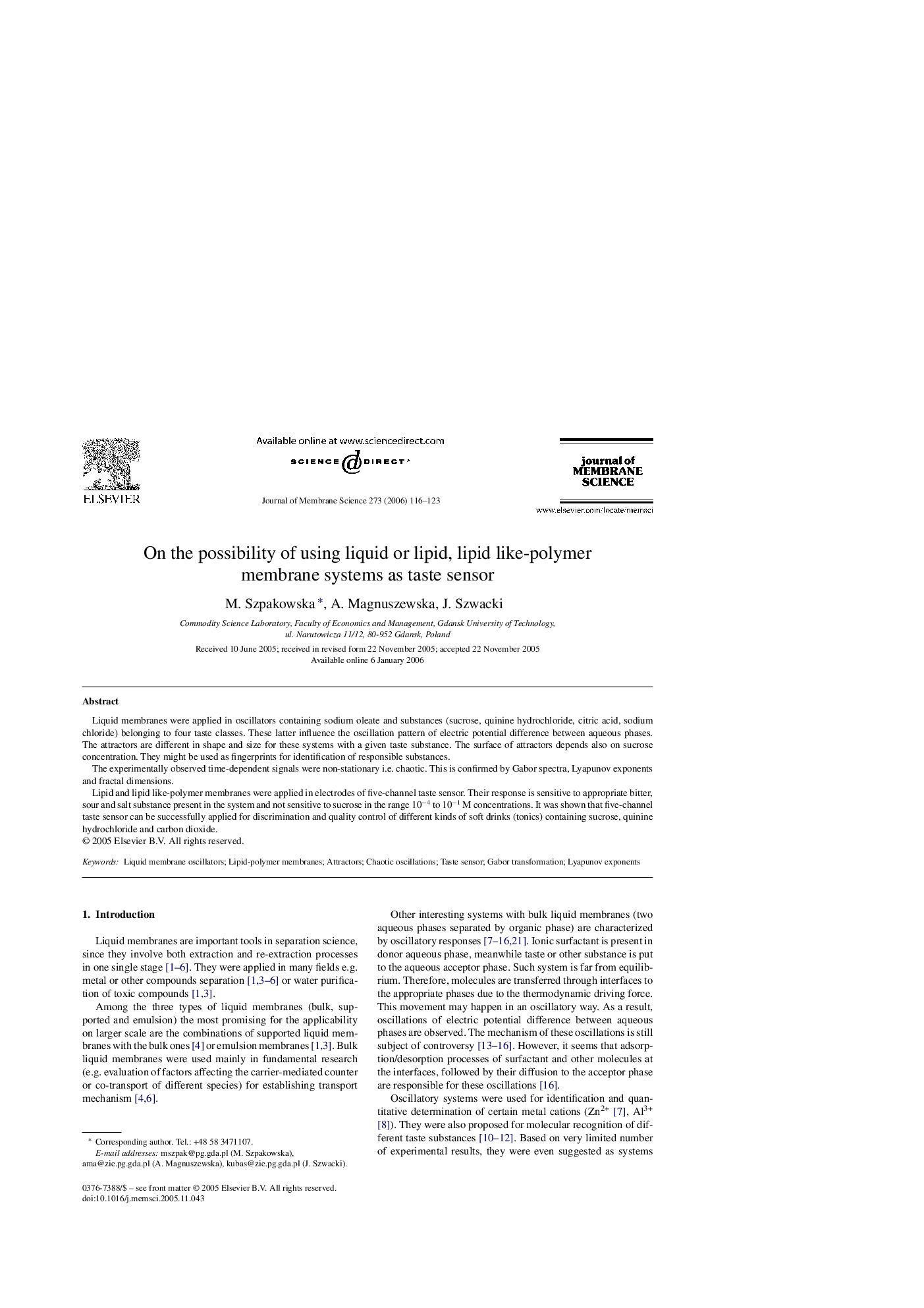| Article ID | Journal | Published Year | Pages | File Type |
|---|---|---|---|---|
| 639653 | Journal of Membrane Science | 2006 | 8 Pages |
Liquid membranes were applied in oscillators containing sodium oleate and substances (sucrose, quinine hydrochloride, citric acid, sodium chloride) belonging to four taste classes. These latter influence the oscillation pattern of electric potential difference between aqueous phases. The attractors are different in shape and size for these systems with a given taste substance. The surface of attractors depends also on sucrose concentration. They might be used as fingerprints for identification of responsible substances.The experimentally observed time-dependent signals were non-stationary i.e. chaotic. This is confirmed by Gabor spectra, Lyapunov exponents and fractal dimensions.Lipid and lipid like-polymer membranes were applied in electrodes of five-channel taste sensor. Their response is sensitive to appropriate bitter, sour and salt substance present in the system and not sensitive to sucrose in the range 10−4 to 10−1 M concentrations. It was shown that five-channel taste sensor can be successfully applied for discrimination and quality control of different kinds of soft drinks (tonics) containing sucrose, quinine hydrochloride and carbon dioxide.
